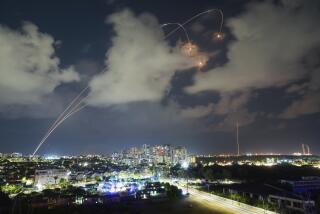Opinion: Why we don’t know if our expensive missile-defense system works
To the editor: The United States Missile Defense Agency (MDA) and the Army Space and Missile Defense Command in Huntsville, Ala., spend hundreds of millions of dollars annually on theoretical and useless system studies. If the MDA were serious, it would pull the ground-based midcourse defense interceptors out of their silos in Alaska and test them monthly. (“Trump administration moves to boost homeland missile defense system despite multiple flaws,” Dec. 24)
The initial interceptors deployed in Alaska and at Vandenberg Air Force Base in Lompoc have notoriously high annual maintenance costs, so testing these interceptors would, if anything, result in cost savings.
The MDA should spread out its budgeted money over a seven-year plan, testing everything before it deploys anything new. At the same time, current-year MDA funding should be cut, and the savings should be put into State Department diplomacy.
As many have stated previously, going down the same failed path over and over again is the definition of insanity.
Gary Wonacott, San Diego
The writer is an engineer and consultant who has worked on missile defense projects.
..
To the editor: We worry about attacks using expensive missiles from places like North Korea; our solution is to defend ourselves with even more expensive (and maybe unreliable) missiles.
I wonder why a foe would not attack us by detonating nuclear bombs brought close to our big coastal cities in cheap, small, reliable and possibly undetected boats. Alternatively, from a little further away, the bomb might be carried ashore by a drone flying at very low altitude.
What consideration is being given to these scenarios?
W. Michael Johnson, San Marino
Follow the Opinion section on Twitter @latimesopinion and Facebook
More to Read
A cure for the common opinion
Get thought-provoking perspectives with our weekly newsletter.
You may occasionally receive promotional content from the Los Angeles Times.










